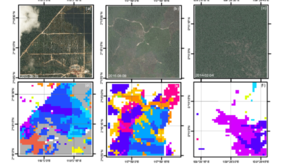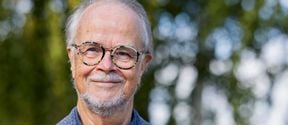Satellite data help reveal the loss of tropical rainforests

Deforestation is estimated to account for 10 percent of global carbon dioxide emissions, making it a significant contributor to climate change. Efficient monitoring of forest areas is vital for preserving the planet’s carbon sinks.
In a recent study published in Forests, researchers from Aalto University and International Institute for Applied Systems Analysis piloted using dense time series of observations from the freely available Landsat satellite data for a continuous monitoring of forest cover in tropical rainforests. The method was tested in the Kalimantan mega-island in Indonesia, a global hotspot of deforestation.
Researchers developed a simple, generic and data-driven deforestation detection algorithm,
which discovers anomalies from satellite observations by comparing them to the stable historical period in the time series of satellite data. An anomalous observation is considered as a potential deforestation event, which is confirmed if a series of anomalous observations is detected consecutively for a pre-determined number of times.
Compared to previous monitoring methods, such as complex machine learning algorithms, the new algorithm is more easily adjustable to local conditions. It can be set to prioritise temporal or spatial accuracy. Thus, it could be applied in law enforcement, where an immediate action is required to stop the newly-detected illegal deforestation event from spreading to the surrounding forest area. Another use case is in carbon accounting, where spatial accuracy is important in estimating the size of deforested area to in turn estimate the amount of greenhouse gas emissions.
”We envision to provide not only the output of the monitoring system, such as a map of deforestation alerts, but also an easy user interface to the algorithm, which the local management staff in the tropics can tune as they gain experience in applying it to local forest conditions. Local capacity development, in both knowledge and infrastructure, is crucial for successful forest monitoring activities”, said Hadi, a researcher from the Geoinformatics Research Group of Aalto University.
The study was published in Forests in July.
The article:
Hadi; Krasovskii, A.; Maus, V.; Yowargana, P.; Pietsch, S.; Rautiainen, M. Monitoring Deforestation in Rainforests Using Satellite Data: A Pilot Study from Kalimantan, Indonesia. Forests 2018, 9, 389.
https://doi.org/10.3390/f9070389
More information:
Hadi, doctoral candidate
Aalto University School of Engineering
Department of Built Environment
[email protected]
twitter @HadiEOind
- Published:
- Updated:
Read more news

Aalto ARTS alum Vidha Samya’s artwork featured at the Venice Biennale 2024
The Pavilion of Finland presents ‘The pleasures we choose’ at the 60th International Art Exhibition – La Biennale di Venezia until 24 November 2024.
IoT Forge donates EUR 1 million to the School of Engineering
The donation will be used for research and education on the Industrial Internet and digital twins.
Join us for the first Aalto Open Science Award Ceremony
All Aaltonians are welcome – no registration required!